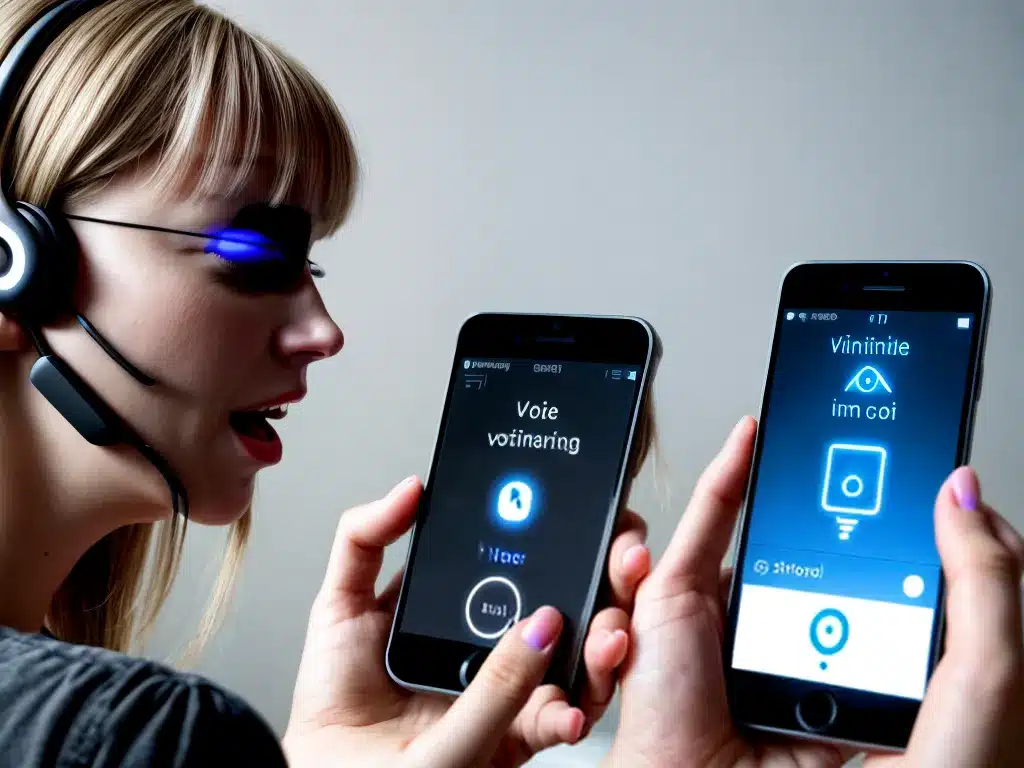
Introduction
The Internet of Things (IoT) is transforming our world by connecting everyday objects and devices to the internet. This allows for intelligent automation and control of our homes, cars, appliances and more. A key way humans interface with the IoT is through voice assistants. Virtual assistants like Amazon Alexa, Google Assistant and Apple’s Siri allow us to control the IoT with our voice. The rise of voice control is accelerating the adoption of IoT devices and expanding what’s possible.
The Evolution of Virtual Assistants
Virtual assistants (VAs) have evolved tremendously in recent years. The first mainstream VA was Apple’s Siri, launched in 2011. This sparked the beginning of the voice AI revolution. Early VAs like Siri could only handle basic commands. Today’s VAs are powered by natural language processing (NLP) and machine learning to understand more complex voice requests. They can execute tasks, control smart devices, provide personalized recommendations and more.
Leading virtual assistants today include:
- Amazon Alexa: Launched in 2014. Controls Alexa built-in devices and smart home products.
- Google Assistant: Launched in 2016. Works across Google and Android ecosystem.
- Apple Siri: Launched in 2011. Integrated with Apple devices and iOS ecosystem.
- Microsoft Cortana: Launched in 2015. Focuses on productivity for Windows 10 devices.
Amazon Alexa and Google Assistant have become most popular for smart home control. Their open ecosystems allow integration with thousands of IoT devices.
Voice Control for Smart Homes
Voice control with virtual assistants is a key way to manage products within the smart home. Smart speakers with built-in VAs like the Amazon Echo and Google Nest Hub provide a natural hub for IoT management.
Here are some examples of how virtual assistants enable voice control in the smart home:
- Smart lighting: “Alexa, turn on the kitchen lights”
- Thermostats: “Hey Google, set the thermostat to 72 degrees”
- Smart locks: “Siri, unlock the front door”
- Home appliances: “Alexa, start the robot vacuum”
These voice commands trigger actions across appliances over Wi-Fi. This allows for convenient hands-free control.
According to Digital Trends, 63% of smart speaker owners use them to control other smart home devices. This demonstrates how voice AIs are becoming a preferred method for IoT control.
Benefits of Voice Assistants for IoT
There are many benefits of using voice control through virtual assistants for managing IoT products:
- Hands-free convenience: VAs allow hands-free control when your hands are full or device is out of reach.
- Intuitive for beginners: Voice is an intuitive interface for those new to smart home tech.
- Accessibility: Voice control enables those with disabilities to manage devices.
- Remote control: VAs allow control of smart devices from anywhere.
- Time savings: Voice automation saves time compared to manual control.
- Personalization: VAs learn behaviors over time for contextual personalized commands.
These benefits make virtual assistants an appealing option for controlling devices across the Internet of Things.
Voice Assistant Integrations
A major appeal of voice assistants for IoT is their ability to connect with a vast array of devices and services. Here are some examples of integrations:
- Smart home brands: Philips Hue lights, Nest thermostats, August locks, Ring cameras, Sonos speakers etc.
- Streaming services: Spotify, Pandora, Netflix, Hulu, Youtube, etc.
- Smart kitchen: ovens, coffee makers, refrigerators, dishwashers from brands like GE, Whirlpool, Samsung.
- Ride sharing: Uber, Lyft.
- Household: Roombas, washing machines, dryers etc.
- Utilities: Smart meters, smart plugs, power outlets
New IoT brands and categories are continually added. Virtual assistant platforms like Alexa and Google Assistant make it easy to link devices. This expands the possibilities of home automation through voice control.
Challenges With VAs for IoT
Despite the conveniences, some key challenges remain around using virtual assistants for IoT:
- Privacy concerns: Always-listening devices raises privacy issues for some consumers.
- Connectivity issues: Can suffer Wi-Fi dead zones limiting device control.
- Disabled outages: Devices become unresponsive during cloud service outages.
- Limited controls: Some device settings offer more options through app control.
- Security risks: Potential for unauthorized access by hackers.
Companies continue improving VA capabilities, connectivity, security and data practices to address these concerns.
The Future of Voice Control for IoT
Voice control for IoT is still in the early stages with much potential ahead. As virtual assistant AI and natural language processing improves, VAs will handle more complex voice requests. We can expect VAs to take on new roles like digital concierge, health coach, teacher and more.
Advancements in multi-modal interactions will allow switching seamlessly between touch and voice. Voice will expand beyond smart speakers into more IoT interfaces, including cars, appliances and wearables.
Overall, voice promises to become an increasingly ubiquitous method for managing devices across the growing Internet of Things. Virtual assistants mark a fundamental shift in human-computer interaction toward more convenient, personalized and contextually-aware voice control.












